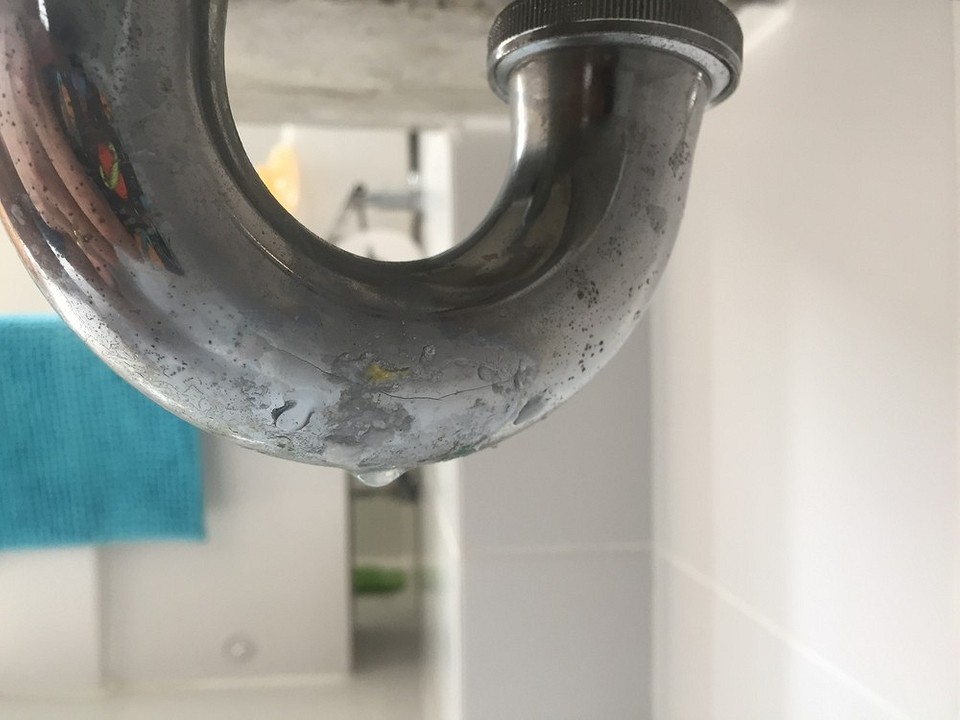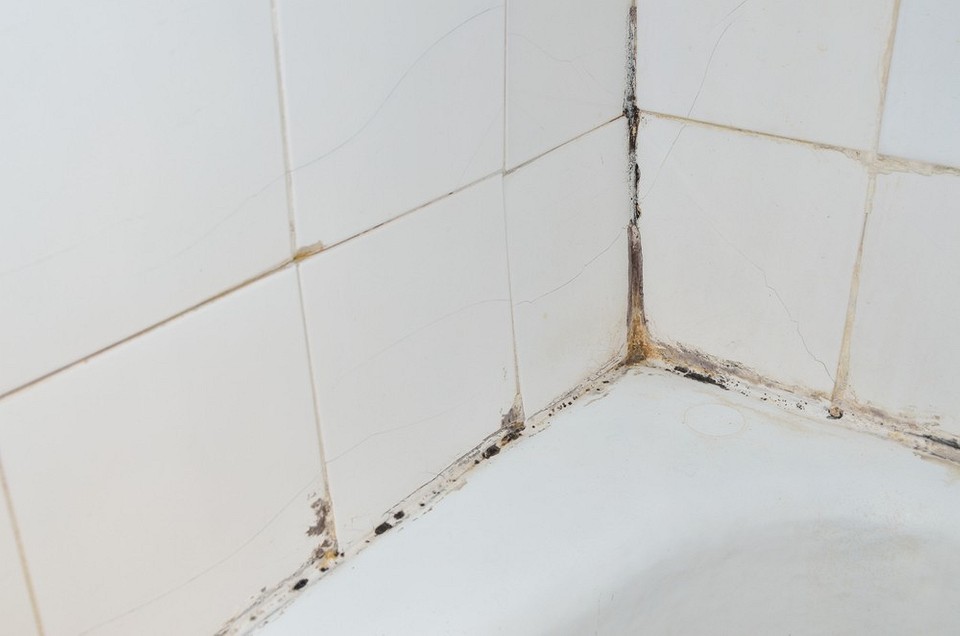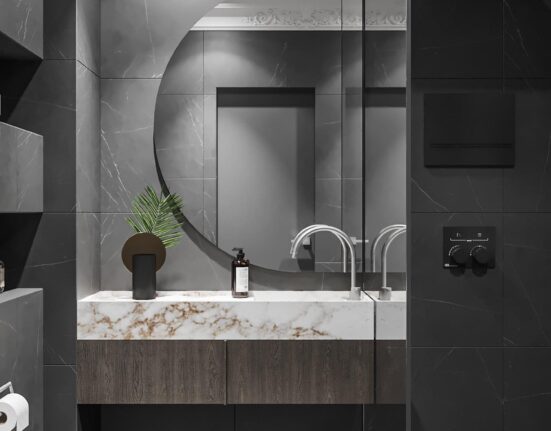Sewer Blockages
The main source of unpleasant smell is the sewer pipes. They accumulate trash, soap and dirty deposits, and organic matter. All this decomposes, resulting in a sewer smell in the bathroom.
A clear sign of a problem is when water drains slowly from the bathtub and sink. To clear a minor blockage, use pipe cleaners and a plunger. For more serious blockages, a drain snake is necessary. After clearing, pour disinfectant into the plumbing, then rinse with water. Regularly use special solutions to prevent blockages.

Poor Ventilation
Poor ventilation is another cause of bad odors in the bathroom. Stagnant air leads to increased humidity, resulting in an unpleasant smell.
To check the air exchange, bring a lit match to the ventilation grill—if the flame does not flicker, it means there is a blockage in the system. In this case, remove the grill, wash it. Clean the shaft walls with a brush, remove dust with a vacuum cleaner. Reinstall the grill.

Siphon Contamination
Hair, grease, soap, and cosmetic residue accumulate in the siphons under the bathtub and sink, creating a breeding ground for microbes. The result is an unpleasant smell from the drains.
Place a basin under the sink, unscrew the bottom of the siphon, let the water drain. Rinse it, and wipe the pipe as far as you can reach inside. Then reinstall the part.

Leaks
Even the sturdiest pipes wear out. Leaks appear, which are not always noticeable. Tiny droplets, condensation remain on the pipes – bacteria, fungi, microorganisms thrive in them.
A clear marker – a slimy deposit appears on the pipes. Also, detect leaks by turning on a strong flow of hot and cold water. Inspect the pipes with a flashlight or place toilet paper underneath. If damage is at the joint, replace the gasket. If there’s a crack in the pipe, temporary repair is possible with cold welding, sealing the damage. But it’s a temporary measure, better to replace the pipe.

Mold
Mold appears due to high humidity, irregular and poor cleaning, bad repairs. It might not be immediately noticeable: for example, it can settle in the tile grout, under plastic panels, borders between the bathtub and the wall. Over time, it occupies the whole room – even the apartment.
Control humidity in the bathroom, ventilate regularly, and clean thoroughly. During repairs, ensure the quality of sealing finishing materials. Also, it’s not recommended to panel the bathroom with plastic panels and install stretch ceilings. In the space between them, walls, and ceiling, moisture accumulates, and mold proliferates. Special products help remove existing mold colonies.

Towels and Laundry Baskets
Poorly dried towels and damp dirty laundry emit an extremely unpleasant smell. Sometimes it persists even after washing.
To prevent items from becoming damp and smelling bad, keep the laundry basket closed and don’t accumulate a pile of dirty clothes, wash them more often. Don’t overload the towel warmer with towels. And don’t dry clothes in the bathroom if it’s very small.

Toilet and Brush
A combined bathroom is a common story. In this case, the toilet or brush may
emit miasmas.
Regularly and thoroughly wash the toilet and brush stand. Pour disinfectant liquid into the brush holder. Change the brush head every 2-3 months. Odor may also come from the tank – it accumulates deposits. Open it, wash inside, then flush and put the lid back on. Use special tablets to prevent deposit formation. Lower the toilet lid before flushing and keep it closed.

Furniture
Cheap bathroom furniture quickly swells, moisture and dust accumulate in damaged areas, bacteria and fungi proliferate.
When buying furniture, pay attention to the quality of edge treatment. Optionally, additionally treat surfaces with water-repellent impregnation. Wipe furniture after water procedures. If chips and cracks appear, seal these areas. Keep inside clean: store only what you use, do regular wet cleaning.

Accessories
Dirt accumulates in microcracks on plastic soap dishes and toothbrush cups, where microorganisms and mold settle. And curtains and mats are among the main breeding grounds for pathogenic bacteria.
Where possible, avoid plastic accessories for soap and hygiene items. Wash and change curtains and mats at least every 3 months. Wash and renew textile mats every couple of years.

Washing Machine
An obvious source of odor from the washing machine is the habit of putting dirty clothes in it. Avoid this, and the smell will disappear. Also, accumulated stagnant water in the door seal, detergent dispenser; blockages in the drain hose and filter, water supply filter can smell bad.
After washing, wipe the drum, door seal, and dispenser dry. Keep the door slightly ajar. Follow your washing machine’s instructions to clear blockages. Periodically use special cleaners.

Acrylic Bathtub
Acrylic bathtubs are a modern alternative to cast iron and steel in terms of price-quality ratio. But many eventually find that it smells strong and unpleasant. This happens due to low-quality materials, improper reinforcement and drying, if the bathtub is made from two-layer extruded composite instead of cast acrylic. The second option is more expensive but better quality.
To remove the smell, after installation fill the bathtub with hot water, let it cool, then drain. Normally, the smell will dissipate within a week. But if you saved significantly, bought plumbing from an unverified manufacturer without a certificate and warranty, alas, the smell will stay for a long time.

Shower Cabin
The trend for shower cabins is no accident – due to the large number of small apartments with cramped bathrooms. But deciding to install one, remember that maintenance will not be easy.
Thoroughly wash and dry the cabin after each shower. Try to clean even hard-to-reach places. And it’s better not to skimp when buying: cheap models deteriorate quickly, and damaged areas become a favorite “home” for pathogenic microorganisms and a risk zone for your health.







Leave feedback about this